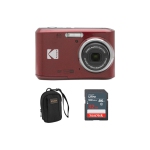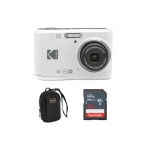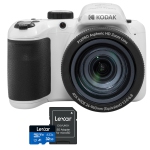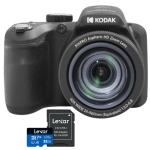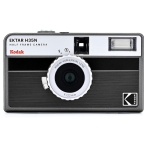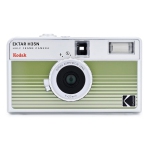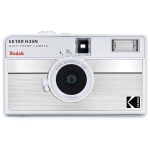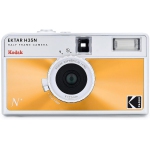High-quality photos from your pocket
What can a point and shoot camera do?
Point and shoot cameras are commonly designated by the fact they have both fixed, built-in flashes, and internal lenses that you can’t swap out. The reason they are called “point and shoot” is because they are designed to make photography easy. You point at a subject and snap the photo. They generally offer automatic modes and features that don’t require you to set certain controls or settings before taking photos.
Depending on the type of point and shoot camera, you may be able to use optical zoom to get closer to a subject. In some models, that can be a focal length of 10x-30x zoom, including portable models that may even go as high as 15x zoom.
Different designs also allow point and shoot cameras to shoot in situations DSLRs and smartphones may be unable to capture images. Rugged cameras can withstand the elements, making them ideal for active lifestyles and sporting events. These cameras have shockproof, waterproof and freezeproof bodies that make them durable without sacrificing image quality.
How you can use a point and shoot camera
Despite being made with auto modes and simple photography practices in mind, point and shoot cameras do have additional features to use. These can be extra shooting modes to recognize specific scenes (action, night, kids, etc.) or some manual control over how the camera captures images.
Advanced point and shoot models offer features and performance not typically seen in smartphones. These include larger sensors, bigger lenses with optical zoom, mechanical apertures and physical shutters. The rugged models also offer better protection and peace of mind compared to more delicate smartphones.
Many point and shoot cameras are small and easy to carry. Others, particularly larger designs with bigger lenses, may need neck straps or cases to carry them with you. You can mount a point and shoot camera to a tripod or selfie stick when you need to take group photos or capture the world behind you.
The difference between a point and shoot and DSLR camera
The biggest contrast between a point and shoot and DSLR camera is size. DSLRs are bigger and heavier, making them less portable by comparison. However, DSLRs have larger image sensors, more advanced controls and interchangeable lenses. Professional and serious amateur photographers prefer DSLR or full-frame mirrorless cameras for that greater level of control.
A DSLR provides full control over exposure, aperture, shutter speed and depth of field. Not all point and shoot cameras offer that level of control. While megapixels don’t determine a camera’s quality, larger sensors often allow for more pixels. The larger the sensor, the better low-light photos should turn out.
Point and shoot cameras are easier to use, and with a little time to learn, they can prove to be excellent tools when at home or travelling abroad. If image quality and portability both matter, a point and shoot camera has its advantages.
Want more info? Check out some of our resources on the Best Buy blog:
Should you buy a mirrorless camera, a DSLR or point and shoot camera?
6 camera accessories to gift the photographer on your list
How to choose a camera for shooting video
Photo 101: 5 things you should and shouldn’t do for great photos



